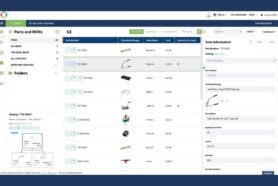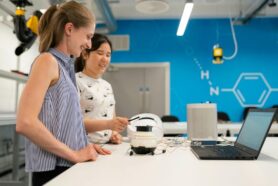
If you’ve ever worked in product development, chances are good that you’ve gotten buried in an Excel jungle at some point. You know the kind – thousands of rows of data, multiple tabs, and smart formulas linking it all together. It’s enough to make your head spin! Almost every company we speak to at OpenBOM is acknowledging using Excel (or another form of a spreadsheet) to organize the information.
What is “Excel Data Glue”?
While the usage of spreadsheets is not surprising at all, a more interesting aspect is not finding the data (BOMs, purchase orders, RFQs, ECOs, etc.) in Excel, but understanding what companies are doing with these spreadsheets. I call it data glue. Let me explain what it means.
Every company from a very small to a large enterprise is run by processes. These processes can be stored and managed in peoples’ heads, written on a corkboard in the shop flow, or described in documents. The biggest problem is that many of these processes are extremely inefficient and assume some data passing between different “hands”. For example, finishing the design, making a current snapshot of the data, and passing it to a person responsible for BOM planning. You can see how the process is focusing on discrete tasks – (1) save design CAD file; (2) Export BOM to Excel; (3) save PDF/STEP files; (4) zip and send to a procurement person. The same process can run internally in the company, but also can involve other people working for multiple companies. This is only one example, but there are many others.
Excels or any other spreadsheets are used as a “data glue” connecting the activities of each person and providing some information space to work. And this process is extremely inefficient.
How to improve processes?
Before starting the introduction of any new tools, I always recommend focusing on process improvement. Try not to computerize the mess you have, otherwise, you end up with a computerized mess. Here are the top three criteria of process improvements we can see for almost every OpenBOM customer.
- Make NPI/NPD more efficient by catching mistakes early in the design process
- Early visibility for suppliers and contractors
- Make everything “connected” by working together
We’ve been thinking about these process improvements from the very early days of OpenBOM. The foundation to make this improvement is in the fundamental things we do to change information architecture. It starts with introducing a flexible online data platform to collect and share information, streamlining information flow between applications, and placing “everyone on the same BOM”.
Moving from Excel to Information Model
The key element to unlocking the transformation process is to rethink the process from a set of “stops” that can be automated into a seamless information space. I will explain what it means. A typical process is flowing between some task points (eg. finish design, plan purchasing, order parts, etc). Those are absolutely legitimate steps everyone understands. However, the isolation of each of these steps makes them very fragile.
A typical mistake is to try to automate the process of data transfers between these points. For example, let’s automate the transfer of BOM Excel export from CAD to a person who needs to order components. Instead, our recommendation is always to build an information model that contains all information and/or files you need to run the process. Once you build this model, everything else is getting simpler. You can rely on this information model as a foundation of your digital process.
Information Glue
An efficient product lifecycle management organization starts from product data management – a powerful information model that allows it to support business strategy and streamline product lifecycle. PLM software like OpenBOM plays here the role of an information glue, connecting people and processes together, automating data sharing, and coordinating between business processes (eg. BOM Management, procurement, etc.). Here are three steps you need to do to build an efficient information model (we teach it during our OpenBOM onboarding training).
- Map all product and process-related terms together to organize a data model
- Automate the process of capturing data from applications (eg. CAD systems, etc.)
- Defining role-based data access, reporting, and analytics (eg. cost rollup)
The good news is, there are ways to get out of the Excel jungle and improve your product development process. Organizing such an information glue with all data you need for product lifecycle management is the foundation of your success.
Conclusion
There are a number of ways that you can improve your product development process. From moving away from Excel to reducing the amount of information that flows through the process, there are plenty of ways to make your product development process more efficient. By creating an information foundation, automating data capturing, and creating role-based shared views, you can end your dependence on Excel and allow the organization to use up-to-date information for better decision-making.
REGISTER FOR FREE to check how OpenBOM can help you today.
Best, Oleg
Join our newsletter to receive a weekly portion of news, articles, and tips about OpenBOM and our community.










